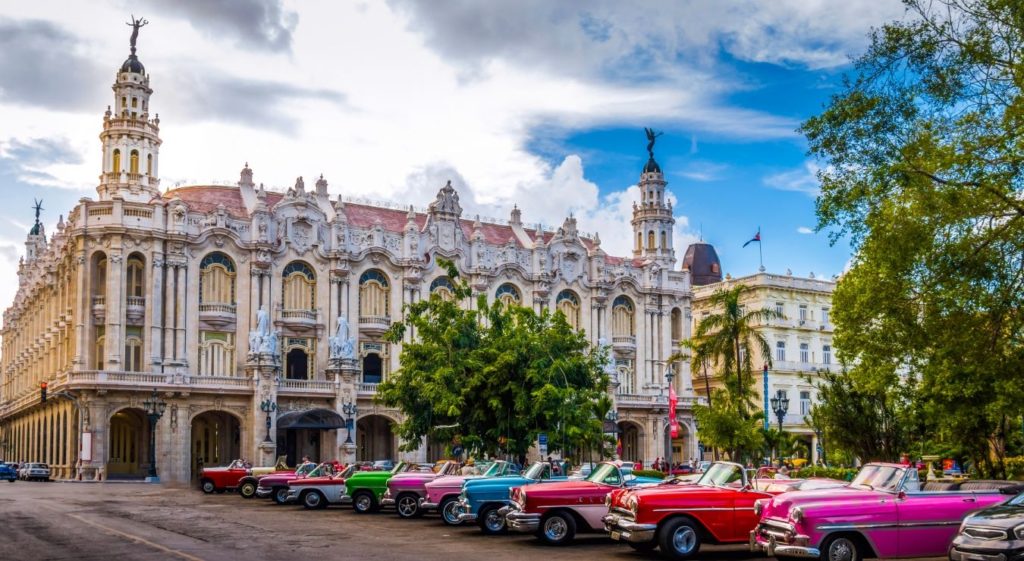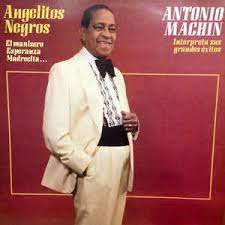ANTONIO MACHÍN, GREAT MUSICIAN, AND THE FIRST CUBAN MILLION RECORD SELLER. VIDEOS
The great Cuban singer Antonio Machín, often referred to as the Spanish Nat King Cole, brought international recognition to the bolero, romantic ballads, and popular Afro-Cuban music.
Born as Antonio Abad Lugo Machín on February 11, 1903, in Sagua la Grande, Cuba, his version of El Manisero, recorded in New York, 1930, with Don Azpiazú’s orchestra, was the first million record sellers for a Cuban artist. Although this was labeled rhumba, it was, in reality, a son pregón, namely, a song based on a street seller’s cry.
Machín was a mixed-race son of a Cuban woman, Leoncia Machín, and a Spanish father, José Lugo Padrón, who emigrated to Cuba from Galicia, Spain. Machín was one of sixteen children. His early years were difficult: he was forced to work at the age of eight to help pay some of his father’s numerous debts. One day, he was in the street by his house singing quietly. A priest that walked by heard him and immediately encouraged him to sing at a party. He sang Ave María by Schubert. From that day on Machín was determined to become a singer. Machín’s ambition was to sing opera, but at the beginning of the 20th century, this was difficult for a poor Cuban of color. Thus, he focused on singing popular music. At the age of twenty, he had become the idol of the young women in his neighborhood. Machín would sing them serenades in the moonlight. He worked as a mason, also traveling across Cuba as a singer. In 1926 he moved to Havana where he met a Spaniard who helped him get a contract to sing at a small café in Havana.
https://youtu.be/E-ETS_ZVUOQ
ANTONIO MACHIN SINGS “ANGELITOS NEGROS” (VIDEOS)
ARTISTIC CAREER
In Havana, Machín was exposed to many genres of music. He joined several trios, quartets, and sextets. In 1924 Machín formed a duo with the trovador Miguel Zaballa. Later he joined the Trío Luna, with Enrique Peláez and Manuel Luna. In 1926 he was brought into Don Azpiazú’s orchestra, the house band at the Havana Casino. In 1930 he went to New York with Don Azpiazú’s band, where El manisero (The Peanut Vendor, written by Moisés Simons) was recorded. It became the first Cuban song to become a hit in the U.S., presaging the rhumba craze of the 1930s. Machín did not return to Cuba after this tour, settling in New York City for the time.
In New York, Machín recorded approximately 200 numbers, and formed the Cuarteto Machín in 1932. The other members were the Puerto Ricans Plácido Acevedo (trumpet), Cándido Vicenty (tres) and Daniel Sánchez (second voice and guitar). Machín himself was first voice. Various other musicians substituted as needed, and eventually this became the Sexteto Machín, with the great Cuban trumpeter Remberto Lara, for whom Mario Bauzá substituted on some recordings. Machín sang with other groups such as José Escarpenter y su Orquesta, Orquesta Antillana de Rafael Hernández, Julio Roque y su Orquesta, and Armando Valldespí y su Orquesta, in addition to performing with Orquesta Machín and Cuarteto Machín.
In 1935 he moved to Europe, living in London and Paris before settling in Madrid in the late 1930s, where he would remain until his death. In Paris, he formed Antonio Machín y Su Orquesta, with Simons on piano, and continued to record in the city (where Cuban music had been popular since the late twenties). After moving to Madrid he married María de los Ángeles Rodríguez, from Seville, in 1943. As the Cuarteto Machín, he made over 60 recordings in Spain, often recording the works of composers Oswaldo Farrés and Consuelo Velázquez. He also had an extensive recording career singing with various Spanish bands; the total of recordings in Europe may be as many as four hundred, giving him a lifetime total of about 600 numbers recorded. If that is approximately right, he would be one of the most recorded Cuban singers of the 20th century, but behind Celia Cruz.
He is best known for singing El Manisero, Dos gardenias, Madrecita, and Angelitos negros.
He died in Madrid in 1977 and was buried in the San Fernando Cemetery in the city of Seville.
PERSONAL LIFE
Spouse(s) María de los Ángeles Rodríguez
(m. 1943; his death 1977)
Children 1
ANTONIO MACHÍN, GRAN MÚSICO, PRIMER CUBANO EN VENDER UN MILLÓN DE DISCOS. VIDEOS
El gran cantante cubano Antonio Machín, a menudo conocido como el español Nat King Cole, trajo reconocimiento internacional al bolero, las baladas románticas y la música popular afrocubana.
Nacido como Antonio Abad Lugo Machín el 11 de febrero de 1903, en Sagua la Grande, Cuba, su versión de El Manisero, grabada en Nueva York, 1930, con la orquesta de Don Azpiazú, fue el primer millón de ventas de discos de un artista cubano. Si bien este fue etiquetado como rumba, en realidad se trataba de un son pregón, es decir, una canción basada en el grito de un vendedor ambulante.
Machín era un hijo mestizo de una mujer cubana, Leoncia Machín, y un padre español, José Lugo Padrón, quien emigró a Cuba desde Galicia, España. Machín fue uno de los dieciséis hijos. Sus primeros años fueron difíciles: se vio obligado a trabajar a los ocho años para ayudar a pagar algunas de las numerosas deudas de su padre. Un día, estaba en la calle junto a su casa cantando en voz baja. Un sacerdote que pasaba lo escuchó y de inmediato lo animó a cantar en una fiesta. Cantó Ave María de Schubert. A partir de ese día Machín se decidió a convertirse en cantante. La ambición de Machín era cantar ópera, pero a principios del siglo XX esto era difícil para un cubano pobre de color. Así, se centró en cantar música popular. A los veinte años se había convertido en el ídolo de las jóvenes de su barrio. Machín les cantaba serenatas a la luz de la luna. Trabajó como albañil, viajando también por Cuba como cantante. En 1926 se mudó a La Habana donde conoció a un español que lo ayudó a conseguir un contrato para cantar en un pequeño café de La Habana.
https://youtu.be/Je1oYMblCqE
ANTONIO MACHIN CANTA “EL MANICERO” (VIDEOS)
CARRERA ARTÍSTICA
En La Habana, Machín estuvo expuesto a muchos géneros musicales. Se unió a varios tríos, cuartetos y sextetos. En 1924 Machín formó dúo con el trovador Miguel Zaballa. Posteriormente se incorporó al Trío Luna, con Enrique Peláez y Manuel Luna. En 1926 ingresó en la orquesta de Don Azpiazú, la banda de la casa del Casino de La Habana. En 1930 se fue a Nueva York con la banda de Don Azpiazú, donde se grabó El manisero (The Peanut Vendor, de Moisés Simons). Se convirtió en la primera canción cubana en convertirse en un éxito en los Estados Unidos, presagiando la locura de la rumba de la década de 1930. Machín no regresó a Cuba luego de esta gira, instalándose por el momento en la ciudad de Nueva York.
En Nueva York, Machín grabó aproximadamente 200 temas y formó el Cuarteto Machín en 1932. Los otros integrantes fueron los puertorriqueños Plácido Acevedo (trompeta), Cándido Vicenty (tres) y Daniel Sánchez (segunda voz y guitarra). El propio Machín fue la primera voz. Varios otros músicos sustituyeron según fue necesario, y finalmente este se convirtió en el Sexteto Machín, con el gran trompetista cubano Remberto Lara, a quien Mario Bauzá sustituyó en algunas grabaciones. Machín cantó con otros grupos como José Escarpenter y su Orquesta, Orquesta Antillana de Rafael Hernández, Julio Roque y su Orquesta, Armando Valldespí y su Orquesta, además de actuar con Orquesta Machín y Cuarteto Machín.
En 1935 se trasladó a Europa, residiendo en Londres y París antes de instalarse en Madrid a finales de los años treinta, donde permanecería hasta su muerte. En París, formó Antonio Machín y Su Orquesta, con Simons al piano, y continuó grabando en la ciudad (donde la música cubana era popular desde finales de los años veinte). Tras trasladarse a Madrid se casó con María de los Ángeles Rodríguez, de Sevilla, en 1943. Como Cuarteto Machín, realizó más de 60 grabaciones en España, a menudo grabando obras de los compositores Oswaldo Farrés y Consuelo Velázquez. También tuvo una extensa carrera discográfica cantando con varias bandas españolas; el total de grabaciones en Europa puede llegar a cuatrocientas, lo que le da un total de alrededor de 600 canciones grabadas. Si eso es aproximadamente correcto, sería uno de los cantantes cubanos más grabados del siglo XX, pero por detrás de Celia Cruz.
Es mejor conocido por cantar El Manisero, Dos gardenias, Madrecita y Angelitos negros.
Murió en Madrid en 1977 y fue enterrado en el Cementerio de San Fernando de la ciudad de Sevilla.
VIDA PERSONAL
Cónyuge (s) María de los Ángeles Rodríguez
(M. 1943; su muerte 1977)
Hijos 1
Agencies/ Wiki/ Various/ Internet Photos/ YouTube/ Arnoldo Varona/ www.TheCubanHistory.com
THE CUBAN HISTORY, HOLLYWOOD.



 ANTONIO MACHÍN, Great Musician, and the First Cuban Million Record Seller. * ANTONIO MACHÍN, Un Gran Músico y el Primer Artista Cubano en Vender un Millón de Discos. VIDEOS
ANTONIO MACHÍN, Great Musician, and the First Cuban Million Record Seller. * ANTONIO MACHÍN, Un Gran Músico y el Primer Artista Cubano en Vender un Millón de Discos. VIDEOS







